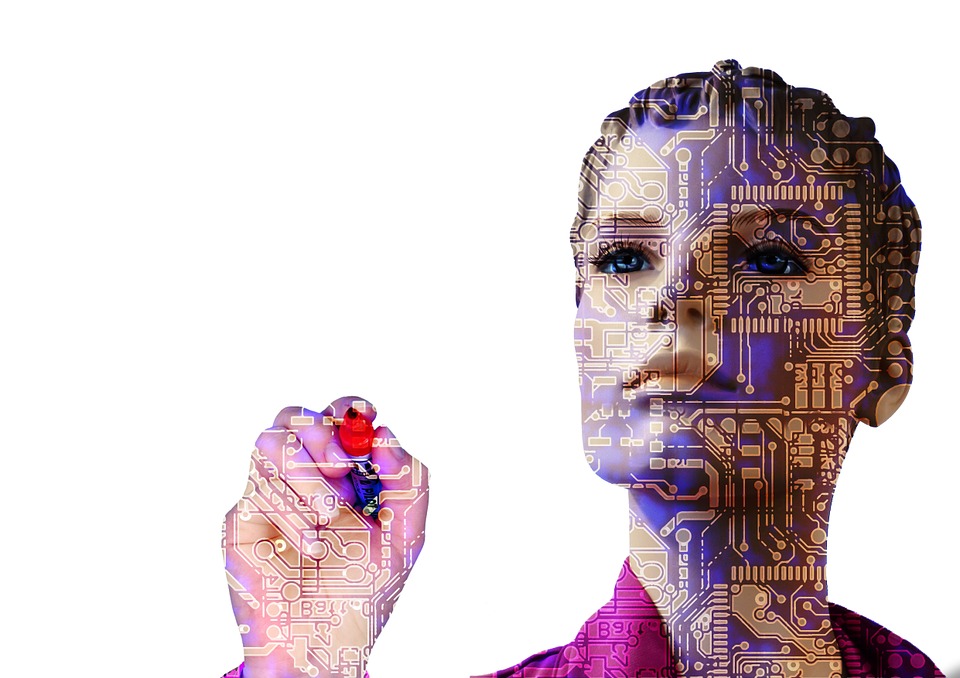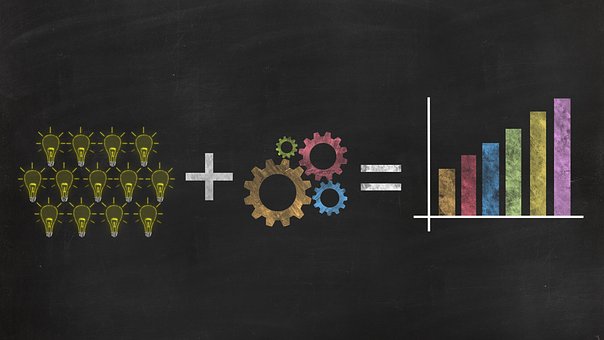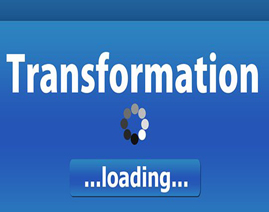Anatomy of Fintechs that’s redefining Financial services business models.
Next day I had to go to a bank for my bank statement took Uber to avoid traffic as well as pain of driving. Journey to the bank was seamless Reached bank and literally had to wait for an hour to get my statement stamped and signed by a branch manager of the bank.
This left me wondering that there are incumbents who are exploring the unexplored likes of Uber and AirBnB and we still are in a stamping and signing process. And I questioned that when was the last time financial service innovated and I kept on getting an answer that last time there was an innovation in financial services it was ATM and before that in late 1940’s and early 1950’s was credit card.
2011 world was waking up two major crises in just a decade, dot com bubble and then big financial crisis which was termed as subprime. Financial institutions specifically like banks, insurance companies, investment houses etc were ticking off tons of compliances which were either enforced or missing. Laws and compliances in the likes of Basel II and IFRS standards were getting firmed up and pushing the Financial Institutions for compliance to stay relevant. Banks were busy in adhering and complying to the new framed laws, compliances and most of the attention and energy were getting routed towards compliance of laws and regulations.
A parallel setup started getting established during this time for financial services. New business models started evolving right from digital wallets, micro lending, microfinance, micro insurance, micro payments. They started exploring the unexplored. As per world bank report till 2014 2 billion population was unbanked and situation didn’t change much till 2017 which is 1.75 billion unbanked population.
In parallel giants were reshaping like Google, Amazon, Facebook, Apple and Microsoft were getting closer and closer to last mile citizens which the incumbents in financial services were either intentionally or unintentionally reaching out. GAFA (Google, Amazon, Facebook and Apple) were actually changing the rules of the game, including the emergence of new currency world in the form of cryptocurrencies.
Everything in financial services since late 2000 and early 2010 onwards were getting disrupted. New business models were getting evolved in payments, remittances, trade finance, lending, investments, credit cards, personal finance, bonds and insurance. That’s primarily because the technology started reaching the last mile human. New Market segments started evolving, wherein unbanked or underbanked were targeted. New emerging players in financial services were not playing the same game what a typical traditional incumbent were into. They were and are creating new playfields leveraging technology.
Fintech was coined, and it became a buzzword as well as scary acronym for the traditional incumbents. New nontraditional players were entering the market in one form or the other. When was the last time we heard that Bank is no more a Bank like I recently read the below headline on Ikea
It’s official: Ikea is no longer just a furniture company
Though the comparison is not apple to apple, but it does have some relevance, especially in financial services. And traditional incumbents in financial services need a change in terms of what we do and how we move and think. Let’s first understand why we need a shift in Banking and Financial services and what challenges these emerging Fintechs are posing to the bank.
Traditional Banks and Financial Services
Fintechs
1. Explore the market with currents
products and services for current and future customers.
1. They are exploring the
unexplore, new markets and business models are getting created.
2. Legacy systems and complex
processes
2. Changing the rules of game and
simplify simple or complex financial problems. Heavy technology usage to manage it.
3. Banks and Financial Services
have minimal customer engagement once product or service is so
3. Fintechs are working on financial
inclusion and real time financial needs of customers.
4. Customers are still getting
traditional products and services
4. Micro products and services are
offered to cater to real time financial needs and requirements 5. One process followed across
traditional incumbents like KYC checks, AML compliance followed in isolation by each incumbent
5. Aggregation of data and thus unified automated process followed to have a seamless experience and engagement.
6. Cost of operations is too high
and thus impact in last mile consumer pricing in terms of interest, charges and fees
6. Very low cost of operations and
thus speed, convenience, low interest, almost no fees or charges.
7. Millennials are impatient and
that’s the next market, they want lot of personalization and speed to execute.
7. Fintech’s offer personalization and speed.
8. Skills are a big challenge in
Traditional setup to challenge the emerging business models.
8. Many evangelists in Fintech to create and sustain new business models.
9. Fintech models have its own set of risks and scale is required. Though WeChat, Apple Pay, SamsungPay, PayTM have been able to achieve the scale but lot need to be done.
Questions with some relevant Answers
Now let’s ask a very fundamental question what is most common services/ product we work on in our day to day life and the answer is “Payment” Now let’s look at some numbers in Payments only :
Mobile proximity payments, are on the rise and expected to generate close to 190 billion U.S. dollars in transaction value in the United States by 2021 with the number of users projected to reach over 60 million before 2020.
Quantum of transactions on Apple Pay and Samsung Pay for the year 2017 is huge.
Another fundamental question areas of banking and financial services getting disrupted. Answer is ALL infact a lot of emerging models evolved specially in Micro space, viz Lending, payments, trade finance for SME’s, wallets, mobile only banks with no deposit accounts and many more. Fintech’s like Beam (UAE), PayTM (India), WeChat and Dash in South East Asia have established themselves as banking solutions without any frills and are catering majorly to unbanked market. Now GAFA’s of the world are spreading the tentacles in almost areas of traditional banking as well as creating the business models unexplored. They have the power of data which they have mined over the years and they understand real time financial needs and requirements of almost the entire population of the world. Then question arises “ If Amazon can get you lower-debt payments or give you a bank account, you’ll buy more stuff on Amazon.”
Amazon Story in Financial Services
If the above picture is still not relevant then for information purpose Facebook has Banking License across, United States, Europe and many other countries. WeChat Chinese counterpart of WhatsApp in 2017 has sent 46 billion worth of red packets (red packets are digital versions of traditional envelopes stuffed with cash - via the Chinese mobile social platform over the Lunar New Year period).
Amazon Cash fits neatly into Amazon’s strategy of appealing to underbanked and unbanked populations — customers do not need a bank account or a phone to open an account, only access to the internet and a printer. In mid- 2015, the company added Amazon Allowance, which is now under the Amazon Cash umbrella. With parental consent, kids can set up their own Amazon accounts and make purchases using their Amazon Allowance. Parents can allocate recurring funds to their child’s account and get the added control of overseeing what their kids purchase. This feature to tap into the next generation of consumers. From 2011 till June 2017 Amazon has issued SMB loans worth USD 3 Billion ranging between $1,000 to $750,000.
In the meantime, Google is likely to disrupt financial services in four areas – payments, money management, product comparisons and financial advice.
So, let’s understand how and why Fintech’s and GAFA’s of the world are scratching and disrupting the market.
1. Ratio of Banked v/s unbanked/underbanked is pretty high and there lies a big
opportunity.
2. Over the years they have collected a huge chunk of data and now data is speaking for
itself with Intelligence build on accumulated data.
3. Fintech’s and GAFA’s are not competing in traditional markets majorly in fact they
are changing the rules of the game. They are creating new and unexplored markets and that too within norms and regulations. 4. They are not creating products and services and creating an inclusive market for
banked, underbanked/unbanked masses. Especially micro products and services viz On Demand products and services. Products and services on micro lending, micro payments, micro insurance have now grown manifolds and continuously growing manifolds in last one decade. 5. They are creating and making more purchasing power for consumers by customer
journey’s experience and engagements. They are catering to On Demand requirements of last mile consumers by predicting what they and when they need it. 6. Fintech’s are impacting payments, invoice pricing, retail banking, commercial
banking, insurance almost every facet of banking and they are not competing in the same space they are changing the complete rules of the game. IOT Voice Commerce/Voice Payments Smart Homes/Smart Cars: What’s the Bank’s Role?
Traditional Incumbents should not see this happening with folded hands and do nothing
With new emerging threatening business models, traditional incumbents have to figure out on what is required to match the pace and agility of non traditional setups. A large number of new, agile FinTech challengers have emerged to challenge more established banks in recent years. Competing on grounds of personalised service, low rates, and the speed and convenience provided by taking the upmost advantage of new technology, these new providers threaten to take away the established customer bases of larger banks.
Now every Bank and Financial Institution has to be FinTech. Strategy has to be constructed or if it’s available needs to be successfully executed or maturity needs to derived. They have to put a banking lens to evaluate what’s happening out there and what needs to be aligned. How can Banks and FI’s be Fintech? Through
Collaboration
Inertia paradox, it’s not a pleasant surprise. Banks and FI’s need to collaborate and and co-work. Create an ecosystem considering the strategy in terms customers, markets, partners with FinTech’s. Like Banks and FI’s can work with FinTech’s on customer experience and engagements and co- build solutions around. Banks can Collaborate with FinTech’s in new markets like work with Facebook’s, Amazon’s or Google to expand their reach in unbanked/underbanked markets and create products and services around the market which can be for all. Partner with other FI’s to build co products and services using FinTech’s. Entry of competition expanded the market. Regulators should work with incumbents banks and FI’s to have collaborative setups to solve repeated issues like KYC and AML compliance to start with. And
subsequently churn out duplicate processes, products and services. Banks should collaborate with your competitions and work together by creating new products and services and have a cost and profit sharing models rather than doing it in isolation.
Inest/ M&A/ Incubate
Banks and FI’s can make strategic investments in FinTech’s/ InsureTech’s .But don’t limit to FinTech’s/ InsureTech’s but invest in ed tech’s, logistics tech, Analytics Tech, agri tech’s, blockchain and AI tech’s etc as every tech touches Banking and FI space. Banks and FI’s should have strategic direction and funds to acquire emerging tech’s. Tech’s who have close alignment and a strategic direction should be either acquired or merged. Incubate Fintech’s externally work with incubators/ colleges/ universities to fund the ideas and execution of ideas.
Emulate
Banks and FI’s should create an ecosystem to create internally and watch closely what’s happening out there. Create Culture and Key Performance Indicators to measure and mange evolved ecosystem. People in Banks and FI’s have to leave their current fort and start their own Tech’s specially business and operations should collaborate with internal IT to evolve their respective Tech’s. Emulate what Fintech’s do to challenge the financial services model.
Don’t Ignore AI, Blockchain, Cloud and IoT
You cannot ignore AI/ Blockchain/ Cloud and IoT. AI in short term help you building customer trust, experience, engagement and customer confidence. In short term AI can be used for operations optimization as well as managing regulations and compliances. And long-term AI has potential to change the banks will shape. Blockchain definitely has to be adopted across all functions of banking and FI’s from invoice pricing to payment to crypto creation in near term and future it has the potential the entire banking and FI industry. Cloud has the power to create speed to market capabilities as well faster roll outs of technologies. Cloud can optimize huge costs and its capabilities are unparallel.
Finally World has lost lot of money in every transaction due to factors trust, compliance/s, fraud’s etc. Banks and FI’s of the future would not be same for sure as next gen would not accept the way it has been. Disruptions would continue to happen on all areas of Banking and Financial Services. From body contours authentication to blockchain to Artificial Intelligence on all processes. Top Banks and FI’s have not been big since day1 it took them decades to be what they are now. But with current trends in tech space a tech company can be as big as a bank within couple of Years and completely outclass.
Stay Relevant in this emerging Tech world to sustain and grow.
You May Also Like

Install These Free Security Tools Now!
Have you heard of intrusion detection systems? Also known as IDS, this software is often used to det...

Crowdfunding drives unprecedented efficiency
Crowdfunding has become the center of attention in the field of financing. It is also an increasingl...

Everything As a Service
Transition from Capex economy to Opex Economy World is in a transition from Macro to Micro. Granula...

IoT in Malaysia – 2019 Predictions
The year 2014 is when Malaysians started to Google the term “IoT” and ever since, the hy...

The business case for 5G
As of 2018 ,33 MNOs have been involved in 5G trials within Asia Pacific, accounting for 44% of 77 tr...

A New Face On Digital Transformation: Engagement Innovation
Whether we believe it or not we are in the fourth industrial revolution – The Digital Revoluti...

Technology & Competitive Data Analysis More Money – More Competition; everyone wins
Technology & Competition – More Money, Better Deal for Consumers & Companies – H...

Blockchain Taxation
World has paid a heavy price for trust, transparency, controls and accountability. Globally there i...

Why Is CDR / CDNR So Important?
Addressing the Fundamental Deficiency in Today’s Mainstream Cyber Security Strategies From Det...

CIO Business leadership - shifting from tech to business leadership
CIOs are no longer technocrats, they are business enablers and crucial part of organisation. CIOs sh...

Ideas and Opinions | 5G as an Enabler of Smart Cities
When 5G comes to mind these days, we think of “is this REALLY it?” and “have we re...

Lessons in Machine Learning
More organizations are using machine learning for competitive reasons, but their results are mixed. ...

Digital Indoor System: Critical Infrastructure for Digital Economic Transformation
Digital Indoor System: Critical Infrastructure for Digital Economic Transformation Developme...

The Changing DNA of the CIO CIO as Business Enabler
The idea that the role of the CIO has now gone beyond technology and innovation related issues, and ...

Today's Digital Miners
Today's Digital Miners I guess by now everyone of us who have read an article or two on digital...

Digital Transformation Readiness Test for Banks
Digital Transformation Readiness Test for Banks The questions banks need to try to answer to test ...

What is Machine Learning
What is Machine Learning? According to Tom Mitchell, a professor at Carnegie Mellon University has d...

Transformation of industry verticals through 5G – Focus and Look Indoors
Transformation of industry verticals through 5G – Focus and Look Indoors Now that 5G is...

Humanize Technology - back to the basics of serving human needs, humanly
Humanize Technology - back to the basics of serving human needs, humanly The subjects of Digital Tr...

Creating the foundation for Sustainable Innovation
Creating the foundation for Sustainable Innovation In 2011, Marc Andreessen famously proclaimed tha...

About Tech Data Diversity And Inclusion
About Tech Data Diversity And Inclusion I am excited about attending the Hispanic IT Executive Coun...

Digital Transformation: Customer Centricity & Intimacy
Digital Transformation: Customer Centricity & Intimacy It was inspiring listening to IMD Profess...

Is Industry 5.0 putting humans back in the center
Industry 4.0 focused on the machines. Is Industry 5.0 putting humans back in the center? I was on a...

Importance of IT Resilience
Importance of IT Resilience Disclaimer: The posting written here is solely of my own comment and ...

Implementing a SaaS Solution – The 3 Major Technical Challenges
So when are you planning to implement a SaaS (Software as a Service) solution? Very soon, if not alr...

So you want an #Innovation Hub?
Innovation, Design Thinking, Digital, Disruption, Agile, Transformation - these are new buzz words t...

The Unsung Hero; The Data Scientist
It is quite likely you are wondering ‘what on earth’ am I on - for cooking up such a tit...

How POC projects made me a better Project Manager
How did I get here? Project Management is a tough job. We need to keep a track on budgets, timeline...

How Data and AI can help in COVID-19 crisis
Since the first report of coronavirus (COVID-19) in Wuhan, China, it has spread to at least 100 othe...

Building thriving business partnerships with Open API
Apple and Google recently collaborated to assist in enabling contact tracing and reducing the spread...

The Future of Indoors with Digital Indoor Systems
Digital Transformation, 5G, and COVID-19 have triggered further growth in indoor traffic Digital tr...

Seizing Opportunities in the ICT Sector
The Increased Pace of Digital Transformation Automation, digitalisation, artificial intelligence (A...

CoVID19, Digital, ML
CoVid19 hit us and has now created the “new Normal” in terms WFH, Video conferences, bal...

Do we really need CEOs, CFOs, and CIOs?
Why CMOs and CTOs are all you need to succeed in today's world This is my first article in a se...

Cinématographe by the Lumière Brothers & History of AI
The Lumière brothers, Auguste and Louis, French inventors and the pioneer manufacturers...

Avenues To Expedite The Incorporation Of 5G Into Industry
5G has been launched in Asia Pacific. South Korea, China, the Philippines and other countries have b...

4G/5G Fixed Wireless Access: A Critical Revenue Growth Engine
In studying key success factors of solutions, it can almost always be shown that the underlying conc...

Big Data Machine Learning IoT and PI
In the era of the Internet of Things (IoT), an enormous amount of sensing devices collect and genera...

Asia’s Plan To Leverage 5G Is Missing A Regional Strategy
The day the world’s first commercial 5G services promised a “great leap” is still ...

Learning from #COVID19…Would remote working be the new normal?
Musings of a Technology Evangelist In the past few months, we have all learnt many new terms&hellip...

Principles of Sustainable Cybersecurity
In past few years the annual rate of cybersecurity breaches has almost been doubled, and as a result...

Data Governance a key element for Digital Transformation
For the last few years, corporate environment, used to speak and hear lots of financial/management t...

Seven Traits of a Millennial CEO
With a staff strength and annual turnover in the order of billions and trillions respectively, Chris...

What is a Pass Key and Is Now the Time To Adopt Them?
What is a Pass Key and Is Now the Time To Adopt Them? There has been recent news about a mass...








Anshul Srivastava
Chief Information Officer, Union Insurance
Anshul is a global technology leader who has been instrumental in driving technology transformations for businesses in the range of multi Billion USD as revenues. He has several notable career accomplishments, wherein he has led, created and launched the key ecommerce, mobile and business intelligence initiatives for world's #1 insurance brand AXA in the fastest growing emerging markets of Asia.